
Companion planting isn’t new. The practice has been used for decades, mostly for agricultural reasons. However, the home gardening community has found companion planting has a place outside agriculture.
Certain plants benefit others by reducing pests and attracting beneficial insects, resulting in healthier plants overall. But in some cases, companion planting can be practiced simply because certain plants look great together.
This is particularly seen with roses.
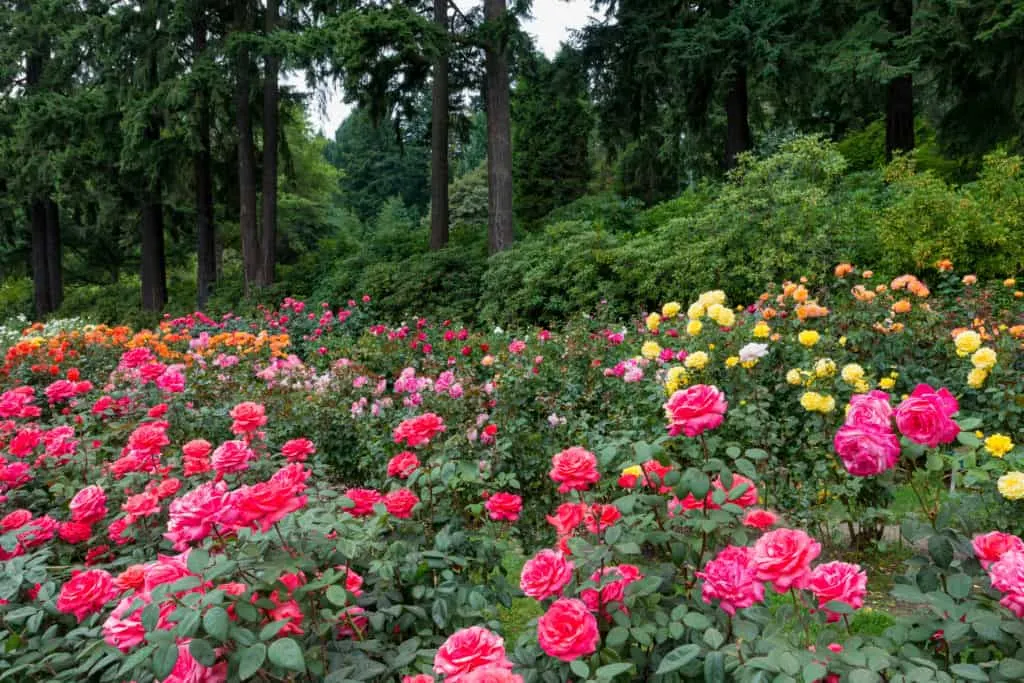
Roses look stunning as stand-alone plants in any space, but sometimes you may want to spruce things up a bit. The best way to do this is to plant plants, whether flowers or herbs, that benefit and complement your rose bushes.
These 12 plants either look great with roses, thrive in the same conditions, or help your roses out somehow – perfect for your traditional or non-traditional rose garden.
1. Lavender
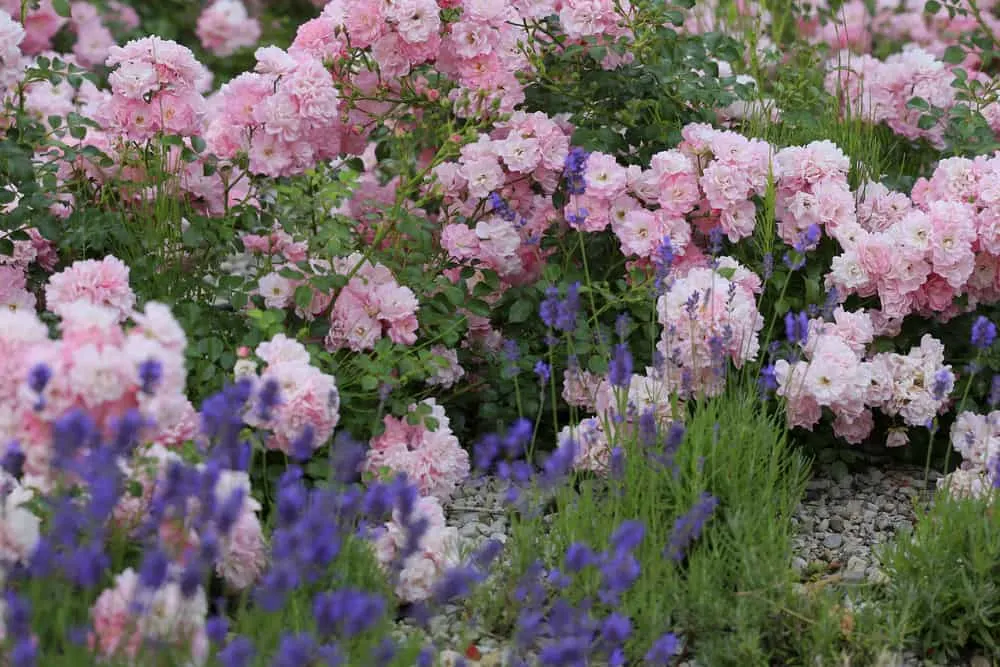
Lavender and roses are a classic pair, often planted close together. The short purple spires of lavender offset the tall stems and cupped flowers of roses wonderfully.
Not only that, but they both thrive in the same conditions. Certain rose varieties, like shrub roses and floribunda roses, love soils that drain well, just like lavender. The full sun that gives lavender its fervor is also favored by some rose varieties.
Lavender has some other benefits too. It’s known to repel deer and rabbits and attracts the best pollinators around – bees. Some even suggest they make good host plants for aphids, protecting your roses from that pesky pest.
This addition is easy to care for, needing very little fuss and even less water to thrive. Lavender grows best in USDA Zones 5-9 and as long as they get full sun, they’ll flourish.
2. Alyssum
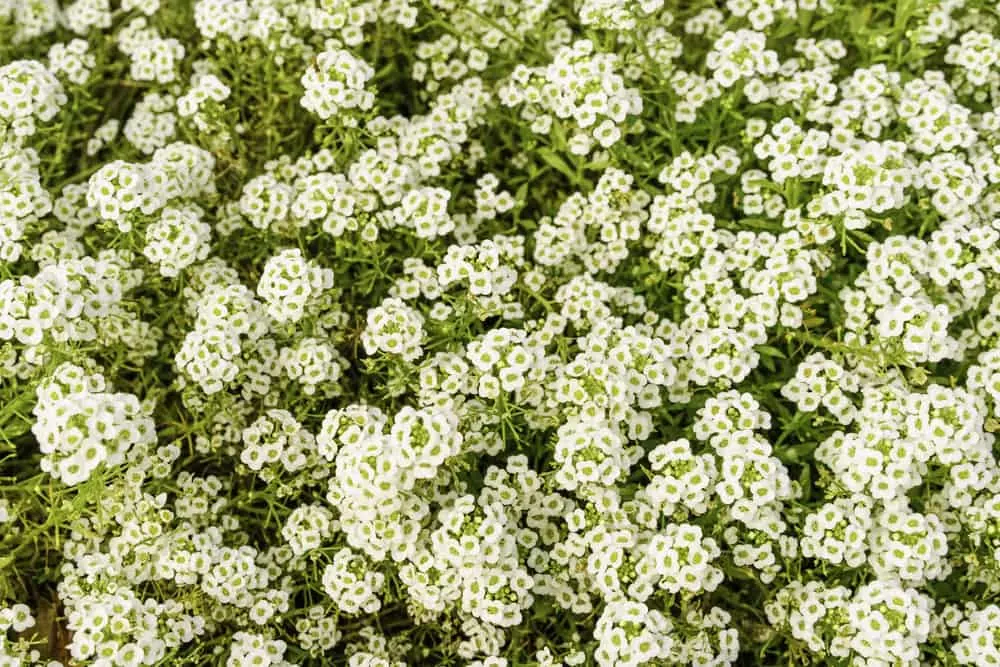
Alyssum’s low-growing nature creates a beautiful carpet of soft-colored flowers. When paired with roses, it only looks better.
Like lavender, alyssum grows best in Zones 5-9 and enjoys rich soil with good drainage. Alyssums aren’t huge fans of full sun though, especially in hotter climates. They make a wonderful choice for gardeners living in hot areas and looking to add something to their rose bushes in shadier spots in their garden.
They have a similar smell to honey and when paired with your roses, make the air in your garden irresistible.
3. Foxgloves
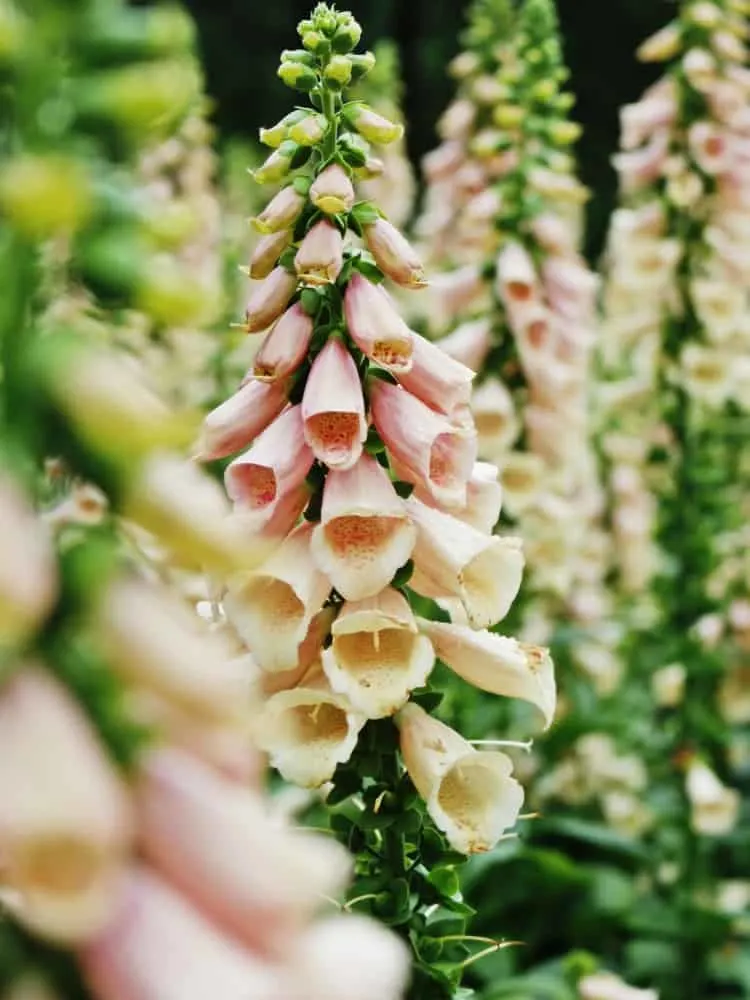
Tall plants also look great with roses – especially foxgloves. When planted together they make a striking pair and create interesting borders along long walkways.
Foxgloves’ tubular flowers bloom in late summer and can be pink, purple, white, and even yellow, a variety of colors that’ll complement any rose.
Foxgloves enjoy a range of light conditions, thriving in some shade and even full sun. Your climate dictates the amount of sunlight foxgloves may need. They’ll enjoy more sun in cooler areas, whereas shade would be ideal in hotter ones.
Foxgloves thrive in USDA Zones 5-9 but can be sensitive to prolonged high temperatures. Soil that drains well will keep foxgloves tall and vibrant alongside your roses.
4. Lady’s Mantle
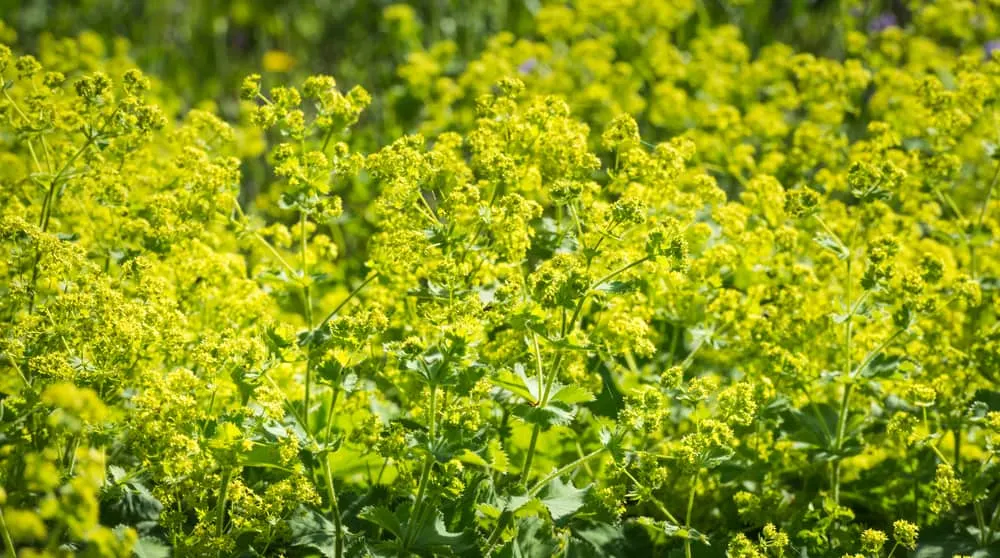
For traditional cottage gardens covered with roses, lady’s mantle is the perfect perennial pairing. It’s relatively short, forming a ground cover with its small yellow flowers. Even better, it makes for an interesting border plant and is an option if you’re wanting an easy plant to cover the stems of your tall roses.
Lady’s mantle enjoys various light conditions, thriving best in partial shade. It can do well in full sun, but be on the lookout for sunscald. It isn’t too picky about soil, but lady’s mantle is not a fan of waterlogged soil. Well-draining soil of any kind is necessary.
Lady’s mantel adapts to temperature changes well, but will need more shade in hotter climates. It grows best in USDA Zones 3-7.
5. Baby’s Breath
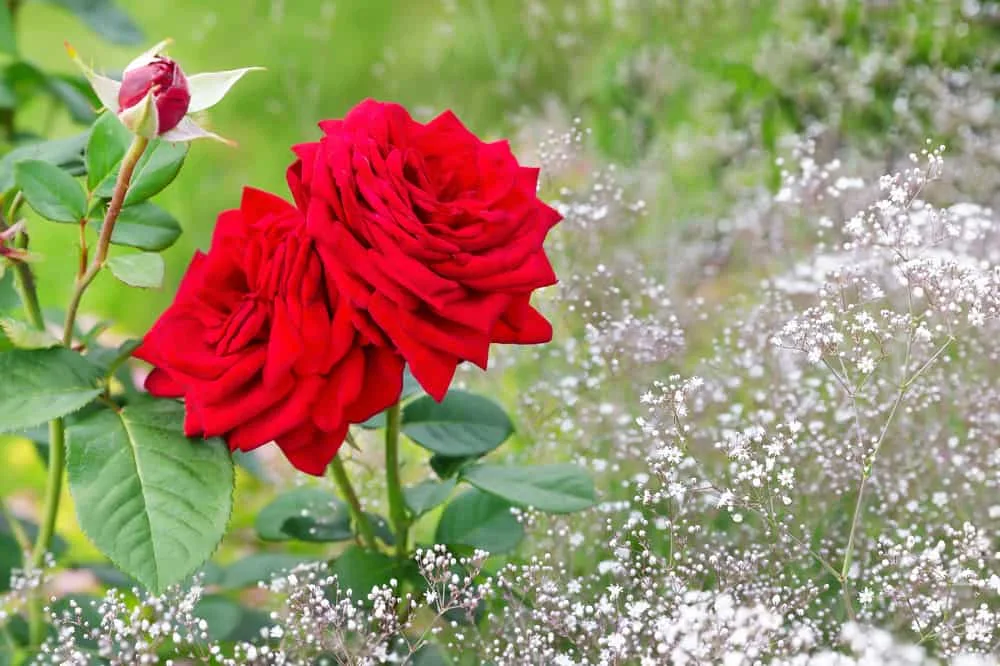
A common sight in many bouquets and floral arrangements is baby’s breath. Its soft white and pink clouds of flowers never grow old in gardens, especially when paired with darker orange and red roses.
Baby’s breath is a good choice for gardeners wanting to create a floral feature in their garden with as little effort as possible. Good drainage (a theme throughout these companion plants) is a must for this hardy perennial.
Baby’s breath requires full sun and doesn’t need a lot of water. It is drought tolerant and handles dry climates better than humid ones (USDA Zones 3-9).
Roses and baby’s breath make a great pair, complimenting each other gracefully in your garden and in cut flower bouquets.
6. Shasta Daisy
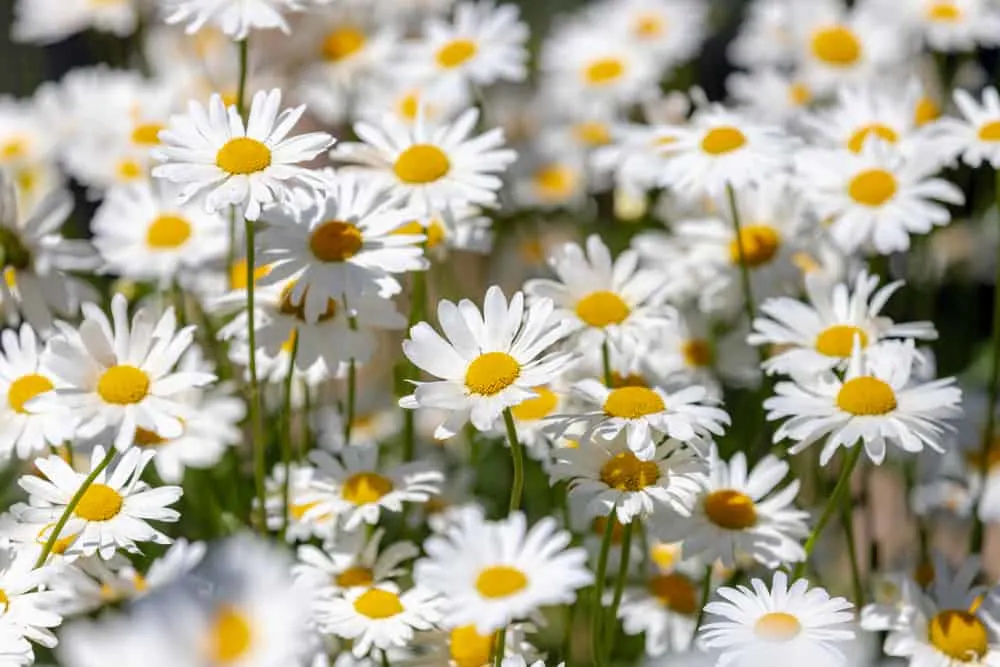
Shasta daisies, like roses, are a garden classic, featuring the well-known white flowers with yellow centers. The simplicity of this flower pairs well with the intricacy of roses of any color.
Shasta daisies are hardy in USDA Zones 5 through 9, enjoying full sun and soil that drains well. Long periods of extreme temperatures, hot or cold, stress this somewhat drought tolerant plant. As long as the temperatures remain stable, Shasta daisies are easy plants to care for, needing very little water once they’re established.
7. Marigolds

Marigolds are the ultimate companion plant. And not just because they look good with roses and share similar needs. They also attract some of the most beneficial insects to your garden.
If you’ve got a vegetable patch nearby, you also won’t regret planting marigolds in your garden. They deter hornworms and prevent root-knot nematodes from taking hold. For roses, marigolds strengthen growth while attracting bees and other pollinators.
The yellow, orange and golden hues add life to rose beds and brighten up any area in your garden. If its charming colors, flowers, and benefits haven’t won you over yet, then one simple fact might – marigolds can grow in almost any climate, from USDA Zones 2 to 11. They are easy to care for, loving full sun and needing water once a week once established.
8. Parsley
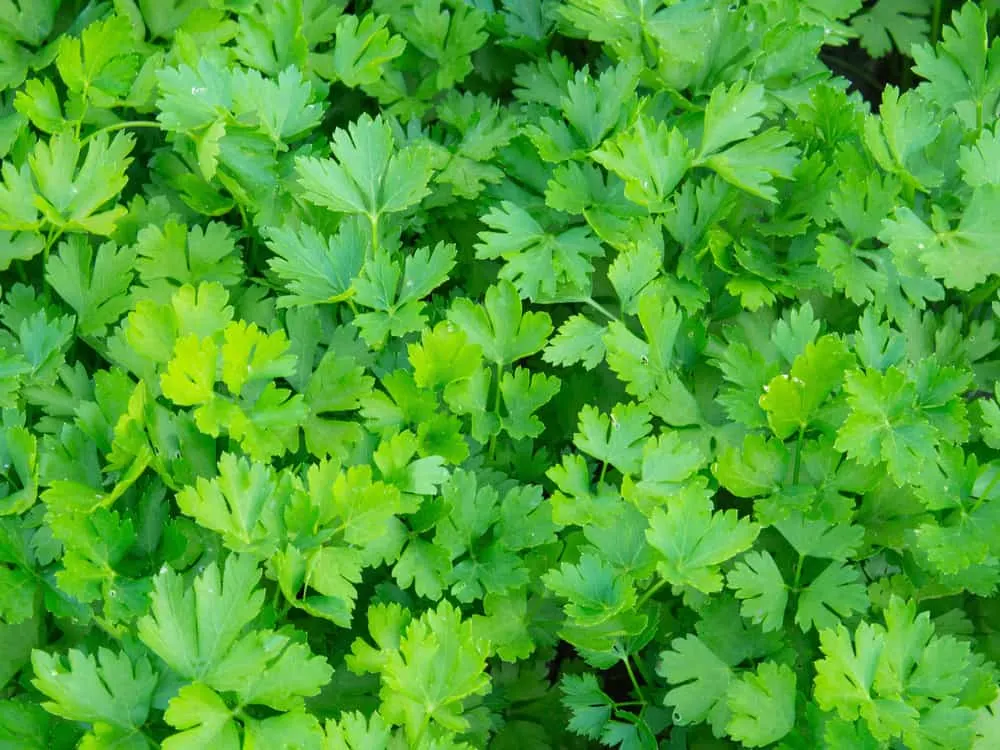
A pair that may not be the first to pop into your head are parsley and roses. Not only do they look surprisingly great together, but parsley also has many benefits for roses. Parsley deters many unwanted insects from your roses, including aphids and rose beetles. Even better, this herb may actually enhance the fragrance of your roses.
Parsley grows in a wide variety of climates (USDA Zones 2-11) and isn’t affected by humidity. Parsley enjoys consistently moist soil, well-draining soil. Other than more frequent watering, parsley is easy to care for and will do wonders if added to your garden.
9. Sage
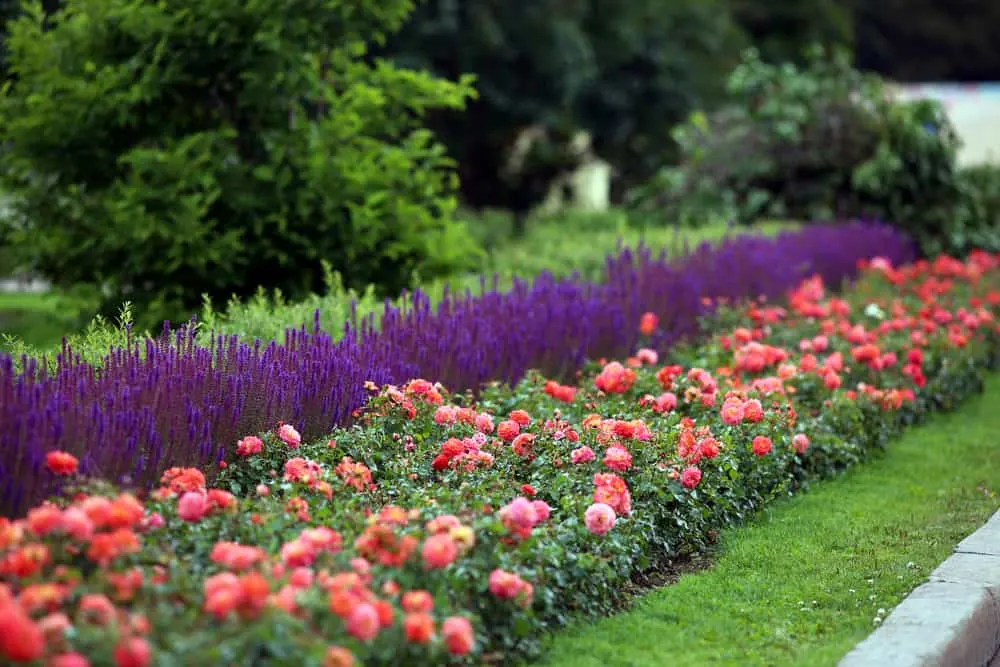
Sage is another herb to opt for if you’re wanting to prevent aphids and beetles from attacking your roses. Much like lavender, sage’s purple blooms create an interesting image when paired with rose bushes.
They too will fill up the gaps created by the long stems of roses, while ensuring your roses remain… well… rosy. Sage thrives in full sun and needs dry, well-drained soil. It is also drought tolerant and won’t grow if overwatered.
Along with deterring a few pests, sage attracts a handful of beneficial insects too. Butterflies, bees, and even hummingbirds are sure to make an appearance in your garden.
If you’re unsure of where to place your sage, it does best as a border plant. In amongst your rose bushes, your path will transform with a touch of sage.
10. Pincushions
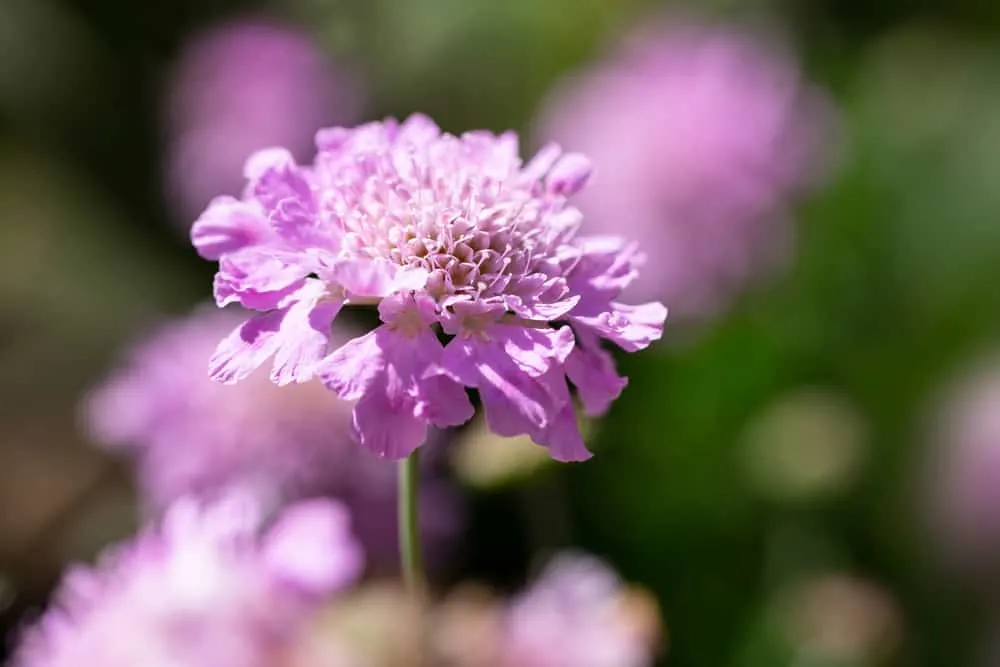
A shift back to handsome pairings now. Pincushion flowers are small but interesting, adding some life around the base of roses.
If you’re one for picking flowers and showing them off in your home, pincushions are an excellent choice for your rose bed. Its many colors will pop along the lower half of your rose bushes.
Pincushions are very easy to care for, thriving in temperate climates. Extreme heat, cold, and high humidity are unwelcome though (USDA Zones 3-7). They’re sun lovers, needing plenty of light to give you the show-stopping blooms these plants are known for.
In warmer climates, some afternoon shade may be needed. Once established, pincushions can go without water for some time (depending on the weather), making this flowering plant another easy yet stunning companion for your roses.
11. Snapdragons
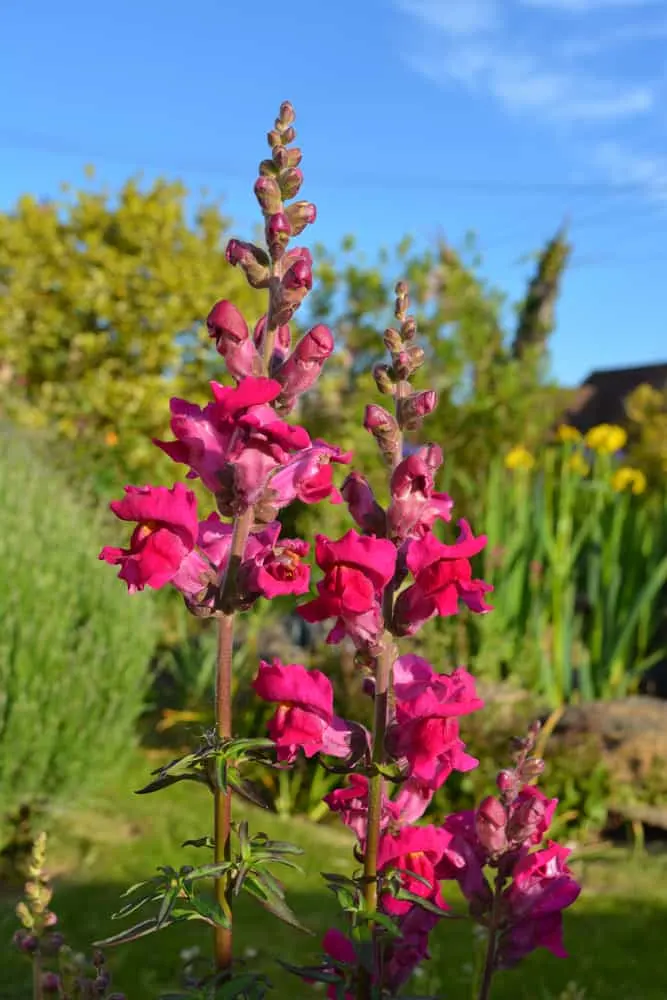
Snapdragons are a spring favorite, for gardens and bumblebees alike. Its long, snout-shaped blooms contrast well with the shapes of roses. Snapdragons fill in the gaps, creating an irresistible flower display. Coming in almost every hue, your garden will be filled with colorful floral magic.
To ensure the magical sight, give snapdragons plenty of sun and partial shade in warmer areas. They do best in cooler climates but are hardy in USDA Zones 7-11.
Due to their differing flowering times, you may miss out on seeing the two together, but you will have a touch of summer with you in winter when roses are dormant. They are slightly thirstier than other perennials – but a welcome price to pay for its warm blooms.
12. Alliums
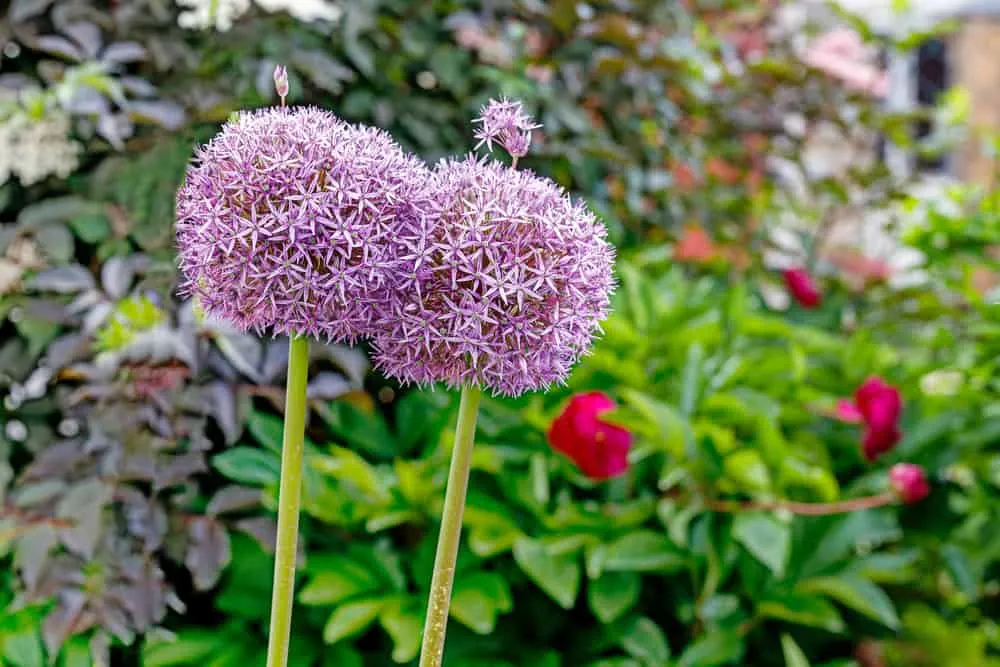
Another interesting companion for your roses are members of the onion family – alliums.
Seasoned rose growers will tell you that pairing members of this family with your roses do wonders. Their strong scent wards off aphids and other pests and many suggest that they prevent black spots on roses.
Garlic and chives are often recommended. Chives’ flowers are a soft white, complementing any rose beautifully. They’re relatively easy to care for, needing full sun and well-draining soil.
For those who would like to continue to showcase the roses, then ornamental onions are the choice for you. You will gain all the benefits of planting a member of the onion family while keeping your rose bush or beds looking marvelous.
Alliums thrive in USDA Zones 4-10 and are native to the middle east. They’re not at all fussy about their soil type, so long as it doesn’t hang on to water. Watering doesn’t need to be frequent, and they’ll appreciate full sun.
Here’s everything you need to know about planting allium bulbs and some of the most beautiful varieties to try.
What Not To Plant With Roses
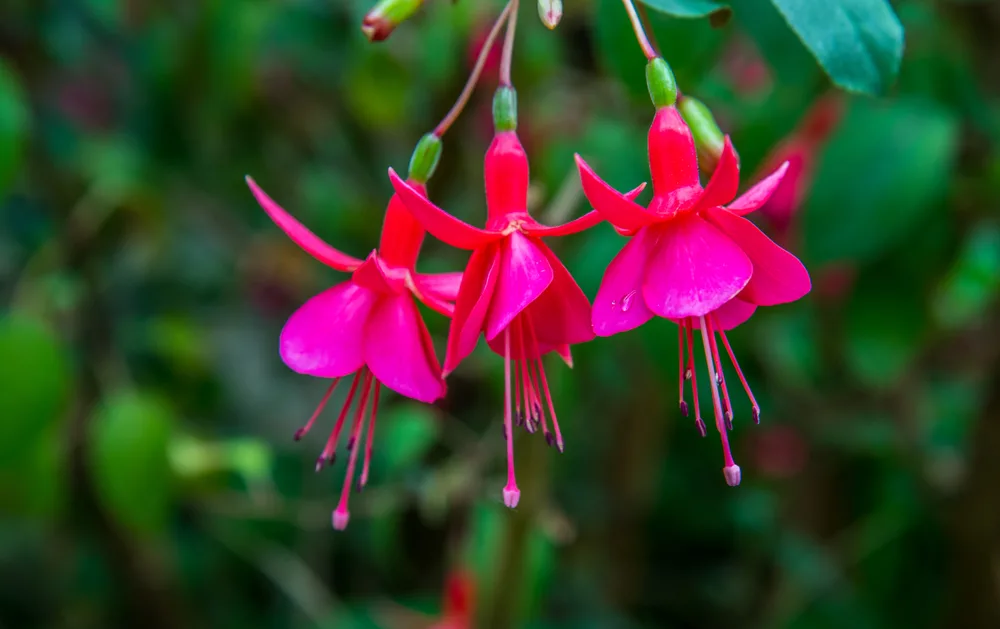
Roses thrive in almost any USDA hardiness zone, depending on the variety. They love the sun and need soil that drains well. Roses are also classified heavy feeders, needing nutritious soil lower in nitrogen. Constantly wet roots and soil will lead to a plethora of problems, especially root rot.
With these conditions in mind, there are a few plants not suited to roses:
- Bunchberry – needs shade and lots of water to thrive.
- Toad lilies – need well-draining soil but do best in full shade.
- Leopard plants – have a love for shade and need slightly alkaline soil that is moist.
- Fuchsia – shade is a requirement for this plant to thrive, along with rich moist soil.
